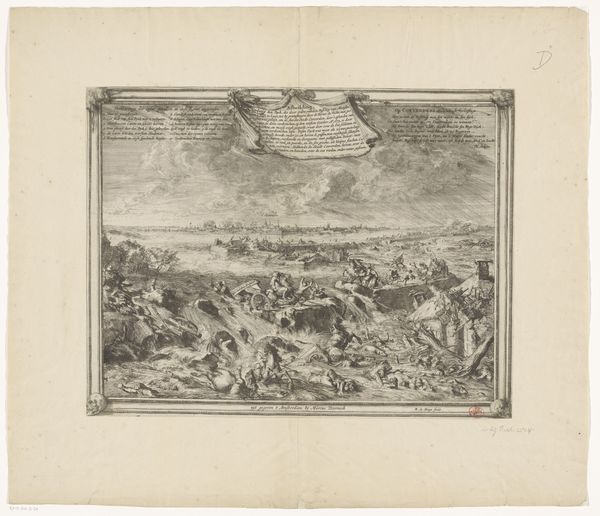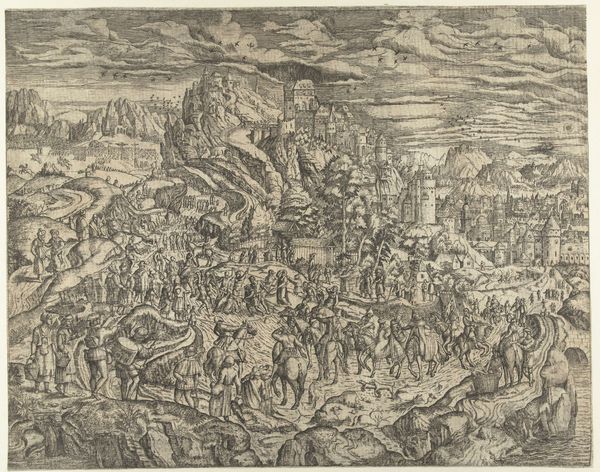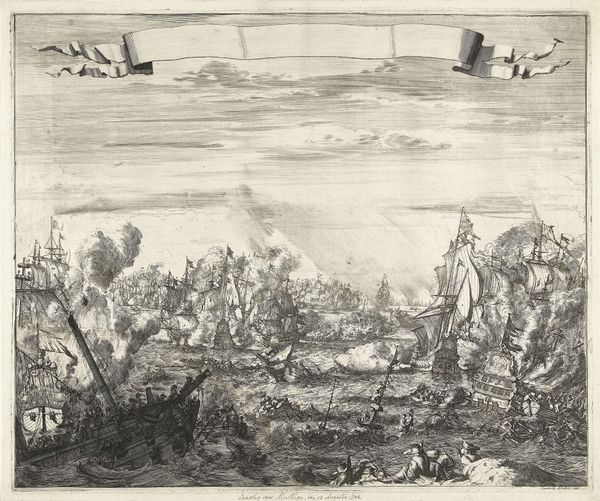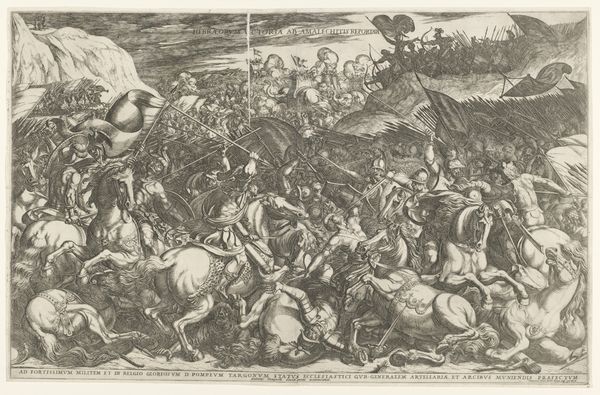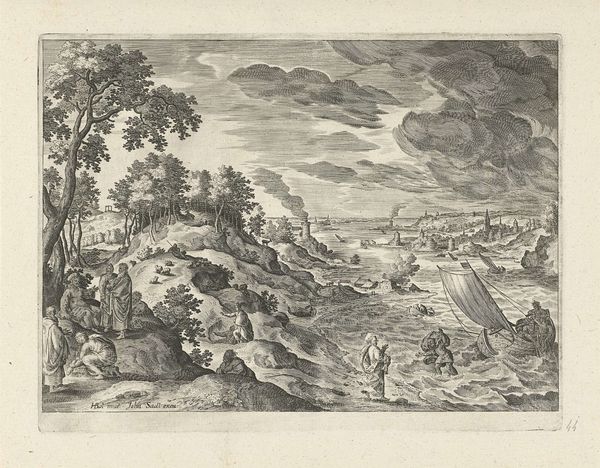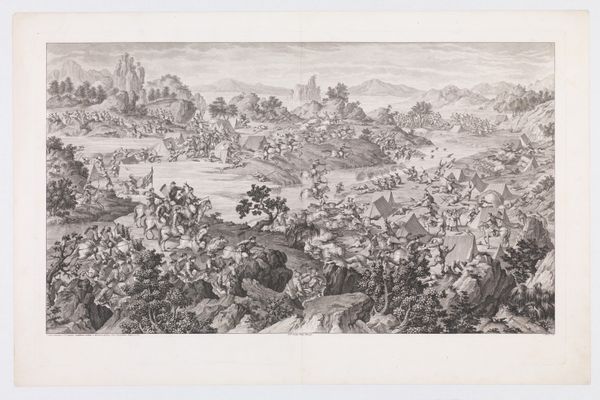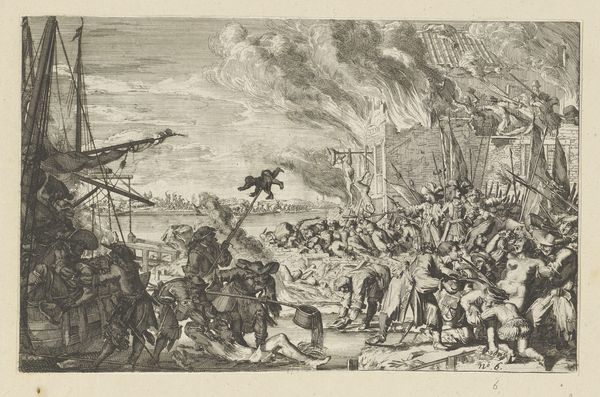
print, engraving
#
narrative-art
#
baroque
#
dutch-golden-age
# print
#
old engraving style
#
landscape
#
history-painting
#
engraving
Dimensions: height 180 mm, width 298 mm
Copyright: Rijks Museum: Open Domain
Curator: Here we have a work titled *Dijkdoorbraak bij Coevorden, 1673*, an engraving dating back to 1675, part of the Rijksmuseum's collection. It depicts a dramatic breach of a dike near Coevorden. Editor: My first thought is chaos. The scene is a swirling mass of water, debris, and figures, a real disaster scene. The old engraving style seems appropriate given that is depicts a war scene. Curator: Indeed. This print serves as a historical document, illustrating a specific event during the Franco-Dutch War. The breaking of the dike was a strategic maneuver, flooding the land to impede the invading French forces. This landscape isn't just scenery, it's a battleground shaped by political strategies. Editor: So, environmental manipulation as a form of warfare. Makes you think about the human cost, doesn't it? Look at those tiny figures struggling against the current, clinging to whatever they can find. They represent entire communities disrupted, displaced. What type of community? Who might these individuals have been? How are we connected to the community in 2024? Curator: Absolutely. And while anonymous, the artist provides a clear perspective on Dutch resilience. Notice how, even amidst the destruction, there's a sense of ordered composition. The town of Coevorden remains visible in the background, almost defiant against the surge. There seems to be people sailing toward it? Editor: I see your point about the composition, but it also feels like a calculated form of propaganda. By emphasizing the heroic struggle against the flood, it potentially obscures the difficult truths. But at least people were able to seek safe passage in a vessel. How many died? And, whose perspective are we missing by only considering this historical depiction? What do modern-day communities do when natural disasters such as these happen today? Curator: It’s definitely a perspective shaped by the dominant narrative. Consider, though, the medium of print itself. It allowed for widespread dissemination of this narrative, shaping public opinion. That it remains here now in 2024 provides the ability for continued inspection and dialogue about these specific histories. Editor: And the responsibility for us to keep challenging it, connecting it to broader narratives of power, displacement, and environmental manipulation that unfortunately continue to occur. Understanding that historical context is crucial for a decolonized reading of this war engraving. Curator: Precisely. It’s in grappling with these complexities that we gain a fuller understanding of the work's power and its continuing relevance to us now. Editor: Agreed. It is a powerful depiction but we can work to view art critically to understand history.
Comments
No comments
Be the first to comment and join the conversation on the ultimate creative platform.

